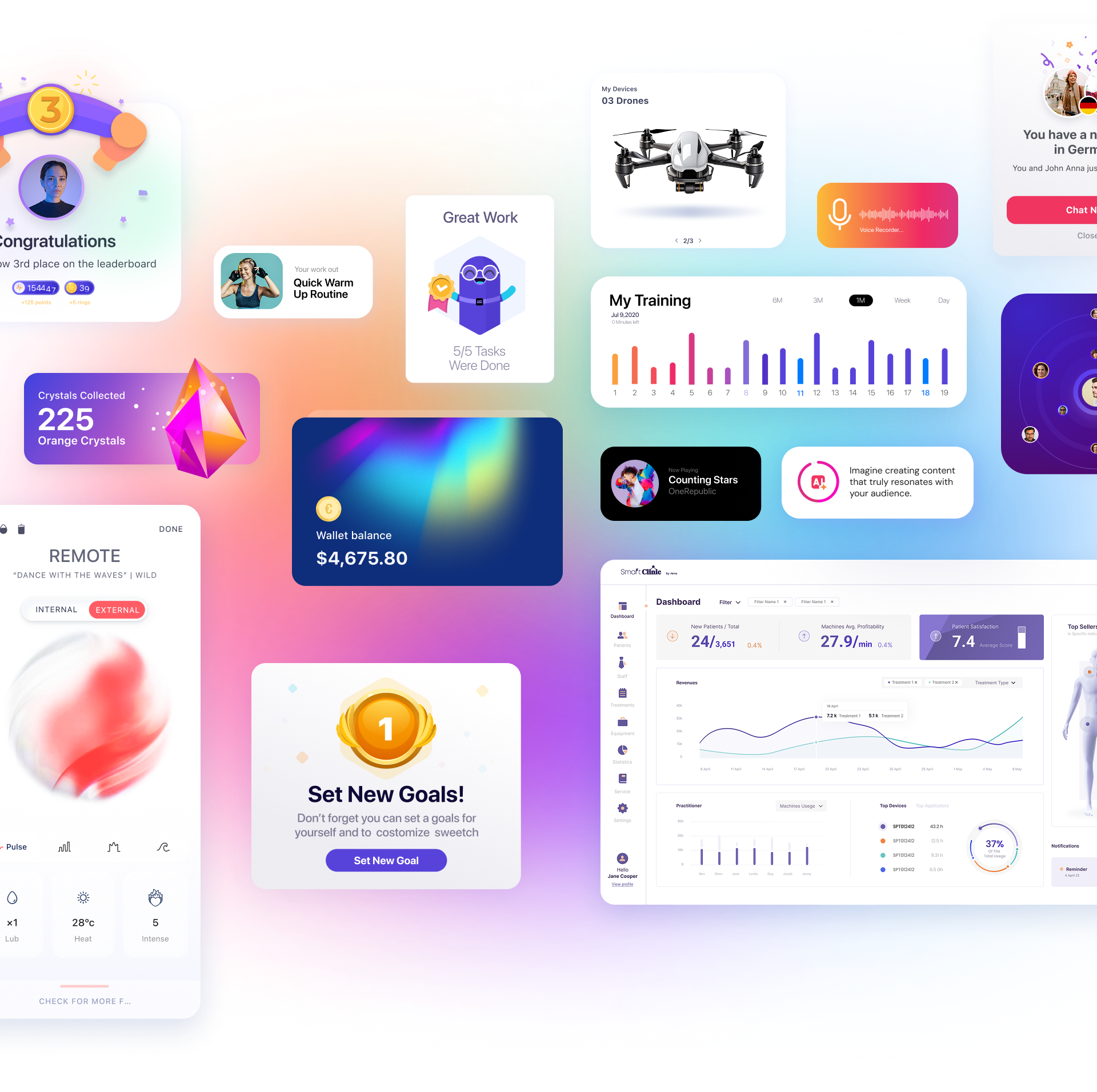What is wireframing? If you have any interest in the world of UX design, you’ve probably heard the term. A wireframe is the first and most crucial step in the design and development process of any digital product.
Let’s start from the beginning: what are wireframes?
A wireframe, or specification document, is a layout blueprint for a digital product that demonstrates which interface elements will appear on each page. Wireframes are commonly used at the start of any design and development project—whether it’s a website, app, or platform—and they outline the content structure and screen functionality, always considering user needs and user journeys.
Organizations and startups that manage projects collaboratively and iteratively, especially those following Agile methodologies, should invest time and thought into creating detailed, high-quality wireframes. For these teams, the wireframe document plays a significant role in team alignment, project understanding, and problem-solving.
What information does a wireframe document include?
A wireframe is like an architectural blueprint—it sets the foundation for building the entire product, both visually and structurally. A typical wireframe includes:
Structure: How do the different screens in the app connect and interact?
Information hierarchy: How is information organized and presented?
Functionality: How will the product interface work?
Behavior: How will users interact with the product, and how will the product respond to different interactions?
Content: What type of content will appear on each screen or page?
The purpose of a wireframe document varies depending on its creators and users, but it always serves as a way to communicate information, vision, and product goals.
Who uses wireframes?
UX designers, animators, product managers, graphic designers, developers, analysts, project managers, clients, and more. Anyone involved in the creation of a product—from ideation, management, and design to development and analysis—should participate in the wireframing process to gain valuable insights about the product.
Now that we understand the importance of wireframing, what information it includes, and who uses it, let’s look at several key principles for building professional wireframes that will serve as a solid foundation for your entire project.
Key Principles of Wireframing
Start with the users and understand their needs
The first and most important step is to focus on the users. Research and understand who will use the product and how they will use it. At this stage, identify user needs in the market and design the product around those needs and various user flows. Develop empathy for your users—their problems are your problems, and you are the one responsible for creating solutions.
Ask the right questions
Successful product planning is based on a clear plan, which should be built by answering several key questions before starting the wireframing process. For example:
Who are our main personas or users?
What are their goals and aspirations?
What are the user scenarios and use cases?
What are their professional objectives?
What design or product patterns already exist in the market for your users?
What gaps exist in current market solutions?
What are your constraints (time, resources, budget, skills)?
Set expectations, not just goals
What are the stages in the design process? Who is involved at each stage? What are the deadlines? What level of communication is required? Define your expectations for each team member involved in the product. Setting clear expectations for everyone will help the team meet its overall goals.
Everything has meaning
Wireframing, prototyping, sketches, and product diagrams are all forms of communication in the product world. Every part of the wireframe—every piece of text, color, shadow, shape, and image—carries meaning. These are the words in your product’s language.
Maintain consistency, not uniformity
When designing a digital product, maintain a consistent design language across different templates to help users become familiar with your product. Each interaction and use case is unique and should have its own clear rules, but what unites them is a consistent approach to design language. This helps users understand how the product works and builds loyalty.
Combine images and text in wireframes
Whenever possible, incorporate both text and images into your wireframes, even though many designers settle for rough placeholders. A common issue in wireframing is estimating text length to fit the layout, rather than matching the actual content. Try to use real content and images. Tools like “Lorem Ipsum” can help generate placeholder text that matches the expected length.
Start small
The best way to plan a product is to start small and iterate quickly. With each iteration, you turn small failures into valuable lessons. Low-fidelity design means starting with a simple wireframe and gradually adding features and functions until you reach the final product. This approach allows you and your team to explore multiple potential solutions before deciding on the best one. Less experienced designers often stick with the first idea that comes to mind, but experienced designers test and evaluate different options to make better decisions.
Every part of the wireframe impacts development
When thinking about design, always consider the development process. Every animation, box, module, image, and map will need to be coded. As designers and product owners, sometimes our solutions are complex and don’t account for the resources required to develop them. Every project has budget, time, and resource constraints, and every element you add to the wireframe—even the smallest—will impact development. In the world of design and specification, there are no small changes, and sometimes compromises are necessary.
A wireframe is not a finished product—it’s a concept
The purpose of sketches, prototypes, and wireframes is to provide concepts for products, not finished deliverables. The product team looks to the wireframe for guidance on what needs to be built to create a high-quality product quickly. Sometimes, the wireframe is just a sketch on paper that solves a problem; other times, it’s a complex process using dedicated wireframing tools.
In summary
Your wireframe document will serve as a visual guide for the entire product development process. At this stage, there’s no focus on visual design or aesthetics. The most important thing is to present the product’s content and features clearly to the defined users.
Our mission is to make it easier for users to achieve their goals by presenting information in a way that aligns business objectives with user needs. Many organizations create product prototypes based on wireframes to test usability early in the design and development process.





 Book a Call
Book a Call





